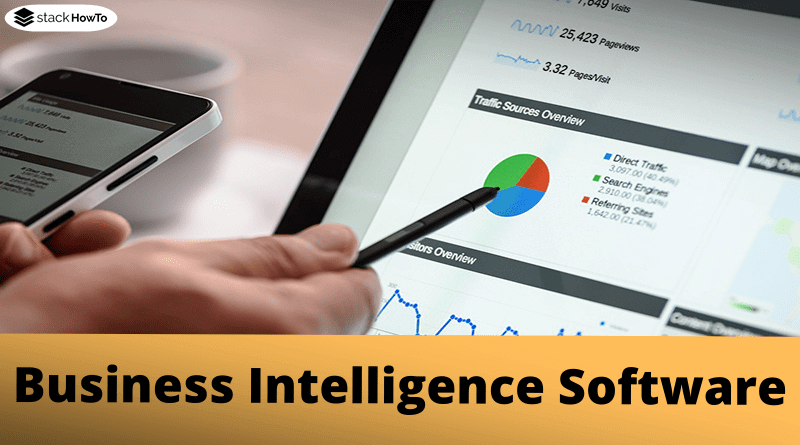Business Intelligence Software – What Solutions Are There?
Data is one of the most valuable resources in any company. However, these treasures can only be found with appropriate analysis. Business intelligence software or BIS is developed precisely for this. This type of software is becoming more and more important because the amount of data is increasing enormously and can only be managed with suitable tools.
What is business intelligence software?
Companies have long been processing barely defined data of a certain type with appropriate programs. However, the aim of a BIS is to provide, make accessible, and analyze all data available in the company. In this way, decision-makers should receive the information that is important for them and be enabled to lead on the basis of data.
What can business intelligence software do?
Many systems are largely freely programmable and such a BIS can be flexibly adapted to the requirements of a company. This requires programming skills or at least some training, which involves some effort.
Business intelligence software has various tasks and capabilities:
- Summary of data from different sources: This is one of the most important tasks and has often been processed by different programs before.
- Visualization: The data is presented visually by a BIS, which is accessible for clarity and facilitates analysis.
- Automation: Processes that are repeated too often can be automated by a BIS. For example, checking certain rapidly changing data or sending a signal when predefined limit values are exceeded.
- Simplicity: The analysis functions offered by BIS can often also be used by nonprofessional.
- Reporting: Reports can often be created and customized automatically.
- AI: Many BIS already offer artificial intelligence or AI functions.
Which companies use BIS?
The use of BIS is more widespread among larger companies than among small and medium-sized companies. So there is still a lot of potentials there, especially for initiative entrepreneurs who want to seize the opportunities for their company with a suitable BIS. Its greater flexibility is particularly attractive for a small or medium-sized company since the introduction of BIS requires much less effort and costs than in a large company.
What solutions are there? How do they differ?
Basically, you can run a BIS on your own servers or rely on a solution from the cloud. The well-known advantages of the cloud, such as scalability and ease of use, are offset by potential problems with data security. Security gaps in your cloud provider can risk the entire database of your company.
1st solution: BIS from the cloud
Cloud solutions have several advantages. They are easily scalable, so once integrated, they can be extended to other business units as needed. In addition, cloud solutions are often characterized by a high degree of user-friendliness and are easy to use and simple to design.
Cloud solutions have a basic problem for this, which is an exclusion measure for many companies: The external service provider must be trusted for data protection and data security. If the cloud provider has security gaps, the company’s entire data inventory can be at risk. Of course, this is particularly problematic if highly sensitive information is sometimes passed on from the company and stored on external servers – a no-go for many companies.
2nd solution: run BIS on your own servers
Operating a BIS on your own servers within your own company offers maximum control and data security. Here companies have control over how well they secure their data. In addition, you can adapt the BIS completely to the company and thus create tailor-made solutions.
Of course, such independent integration is more complex and expensive than a pure cloud solution. But don’t worry – you don’t have to completely program the software yourself – there are providers on the market who sell suitable software and help with the installation.
Examples of some business intelligence software solutions
The properties of different solutions can be illustrated by the advantages and disadvantages of individual systems.
- Clear Analytics uses the Excel format to display all data. The advantage lies in the familiar Excel environment, which has led to a very positive user rating. However, this data structure will reach its limits in the foreseeable future.
- Datapine is suitable for both nonprofessional and data analysts and offers an intuitive user interface and AI-based functions. The disadvantage is that mobile access is only accessible through an app and not through a browser.
- SAS offers a special feature for text analysis for data such as from social media and extensions through machine learning. However, the range of functionality offered makes it difficult to find the right solution for a company.
- Microstrategy claims to be able to independently gain new insights from data, which is referred to with the term hyperintelligence. As you would expect, the configuration of this system is challenging.
Conclusion
The more comprehensive functions offered, the more difficult their handling will be. You won’t get around this fact, but with a deeper familiarization with the matter, you can exclude many solutions as unsuitable for your company and then select a suitable system for you.





